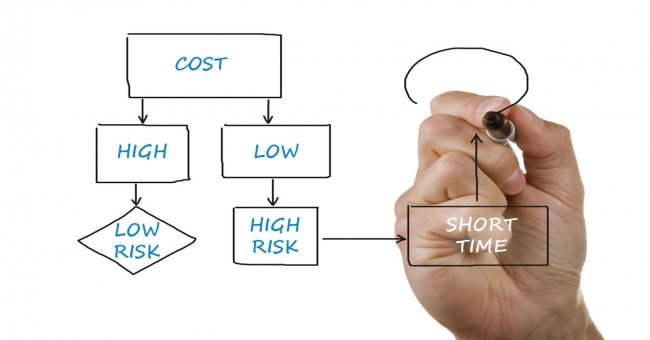The three factors which affect a migration project are:
1) The time required,
2) The risk involved,
3) The cost incurred.
The time required to migrate invariably depends on the state of the current process. Any migration strategy applied should consider the total time required to migrate. The timeline calculation should factor in all three stages of migration: pre-migration preparation, the migration itself and the post migration settlement period. It would be wise to build in some time for contingencies and unforeseen challenges which might present themselves during the execution of any of the three stages.
The risk, just like any project, carries inherent and contingent risks. Risk exposure, which is basically the probability of a risky situation presenting itself times the cost of the risk including its mitigation, shouldbe considered. Risk analysis allows decision makers to gauge what they stand to lose in case the migration doesn’t go as per the plan. The better the understanding of risks associated with a migration project, the better the chances of the management selecting the most suitable migration technique.
The third and probably the most important factor for the C-Suite of any organization is the cost of migration. Depending on the strategy being considered and the existing processes, costs would include any expenses on the old application, expenses associated with switching to the new application and the other peripheral cost components, like internal man hours of work required, down-time losses which constitute operational costs and risk related costs too.
It is critical to highlight at this juncture that the time, cost and risk associated with the migration project and the choice of a migration strategy should be weighed based on three vital sub-factors or conditions.
First, the interdependence,signifies how much the other systems of the organization depend on the existing MES application to function, when the interdependence is lower, all three i.e. the time, the cost and the risk related to migration tend to reduce, and vice versa.
Second is the the level of automation in the process which the existing MES is responsible for. The more automation the existing MES provides, the higher would be the time, risk and cost associated with replacing it and vice versa.
Third condition would be the downtime impact. This is a crucial sub-set of the two conditions mentioned above, as the higher the interdependence and automation for the current application, the larger its down-time impact and thereby larger risks, costs and time.
Click here to read the full blog for more information about critical factors regarding the MES Migration.


